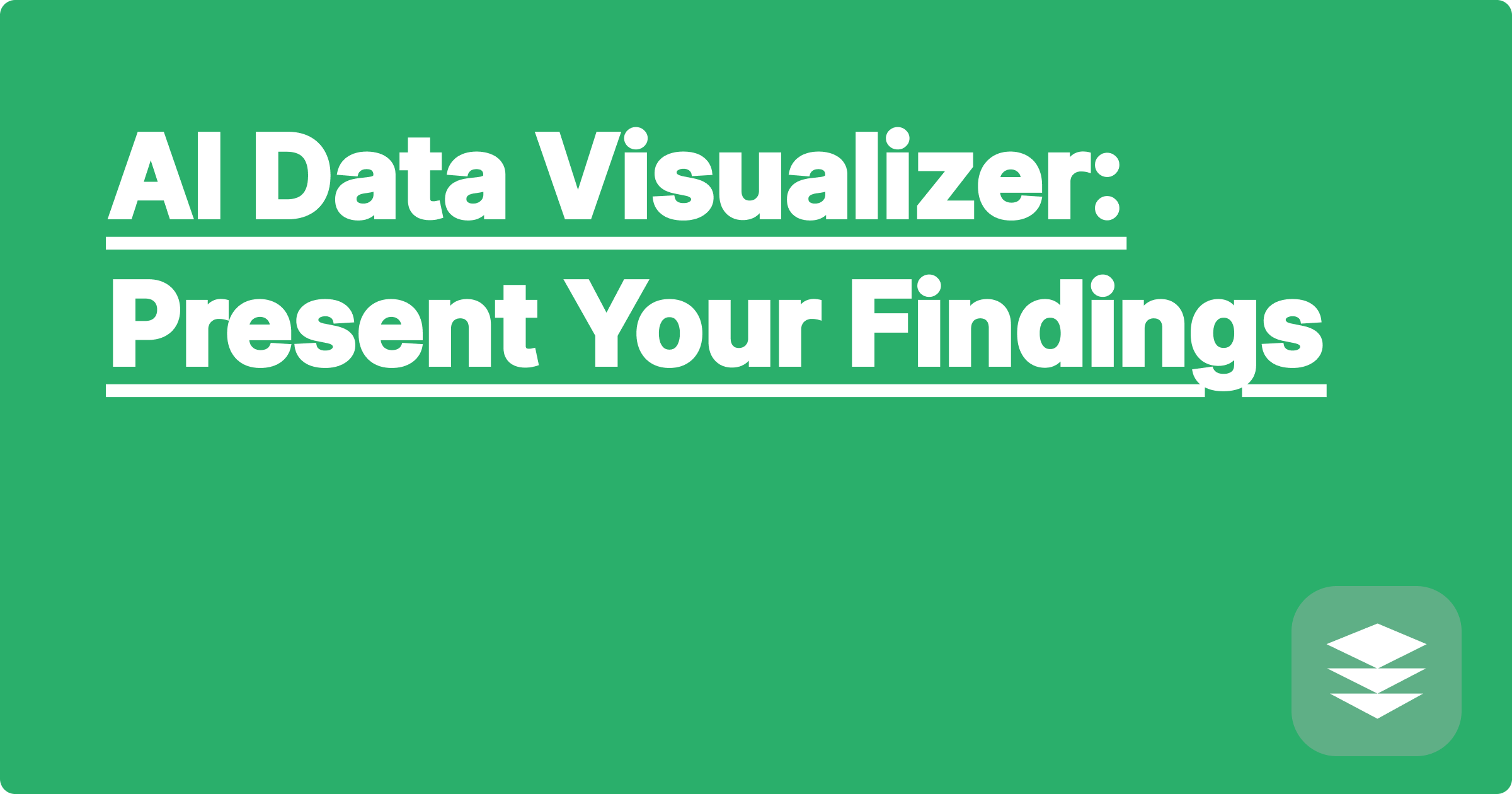
The demanding world of STEM education and research often leaves students feeling overwhelmed. Balancing coursework, research projects, and personal life can be a constant struggle. The sheer volume of data encountered in STEM fields, from complex equations to experimental results, can make analysis and presentation a daunting task. Fortunately, the rise of artificial intelligence offers a powerful new toolkit for STEM students and researchers to not only manage their workload but also enhance their understanding and presentation of complex data. AI-powered tools can transform the way students learn, researchers analyze data, and ultimately, how they present their findings with clarity and impact. This blog post will explore how AI-driven data visualization can revolutionize your academic and research journey, specifically focusing on practical strategies to boost your GPA and research productivity.
Imagine effortlessly creating stunning visualizations of your research data, transforming complex datasets into easily digestible and compelling narratives. Picture yourself managing your time effectively, balancing coursework and research with personalized study plans generated by AI. Think about the ability to quickly summarize complex research papers and extract key insights, saving you hours of precious time. This is the power of AI in STEM education and research. Platforms like the hypothetical GPAI (Generative Personalized AI for Academics), alongside existing tools like Wolfram Alpha, ChatGPT, and others, are designed to empower STEM students and researchers to achieve academic excellence.
STEM fields are inherently data-rich. Students and researchers grapple with vast quantities of information, ranging from experimental observations and simulations to complex mathematical models and theoretical frameworks. Traditional methods of data analysis and presentation often fall short in effectively conveying the insights hidden within these complex datasets. Static graphs and charts can lack the dynamism and interactivity needed to explore multi-dimensional data. Moreover, creating these visualizations can be time-consuming, diverting valuable time away from core research and learning activities. The challenge lies in not only analyzing this data effectively but also presenting it in a compelling and understandable manner. This is where AI-driven data visualization tools step in, offering a transformative solution.
AI can transform data visualization in STEM by automating the creation of dynamic and interactive visualizations. Tools like Wolfram Alpha can generate visualizations from raw data or equations, allowing students to explore mathematical concepts visually. ChatGPT can assist in crafting compelling narratives around the data, helping to explain complex findings in an accessible way. Specialized AI tools can analyze large datasets, identify patterns, and suggest the most appropriate visualization techniques, saving researchers significant time and effort. GPAI, as a conceptual example, could integrate these functionalities into a single platform, allowing for seamless data import, analysis, visualization, and presentation generation. This integrated approach streamlines the entire process, from raw data to polished presentation.
Let’s walk through a hypothetical scenario using GPAI. Imagine you are a physics student studying projectile motion. First, you would input your experimental data, including initial velocity, angle, and measured distances. GPAI's AI engine would then analyze this data and suggest suitable visualizations, perhaps a dynamic trajectory plot showing the projectile's path over time. You could further customize the visualization, adding parameters like air resistance or varying gravitational fields to explore different scenarios. GPAI could also generate an accompanying narrative explaining the physics behind the visualization, enhancing your understanding of the concepts. Finally, you could export the visualization in various formats for presentations or reports, significantly simplifying the presentation process.
Consider a chemistry student using an AI-powered tool to visualize molecular structures. The student can input the molecular formula, and the AI generates a 3D model of the molecule, allowing them to rotate, zoom, and explore its structure interactively. This visualization can be invaluable for understanding molecular interactions and chemical reactions. In engineering, a student could use AI to visualize stress distributions in a bridge design under various load conditions. The AI could analyze the structural data and generate a color-coded visualization highlighting areas of high stress, helping the student optimize the design for safety and efficiency. These are just a few examples of how AI-powered visualization can transform STEM learning and research.
To maximize your academic success with AI tools, consider these strategies. First, actively experiment with different AI tools to find those that best suit your specific needs and learning style. Don't be afraid to explore both specialized tools like those for molecular modeling and general-purpose tools like ChatGPT for research assistance. Second, integrate AI tools into your daily workflow. Use GPAI (or similar tools) to create personalized study plans and manage your time effectively. Leverage AI-powered research assistants to summarize papers and identify relevant research. Third, focus on understanding the underlying principles. While AI can automate many tasks, it's crucial to understand the scientific concepts behind the visualizations and analyses. Finally, don't hesitate to seek support from your professors and peers. Discuss your AI-driven findings and seek feedback on your visualizations.
To conclude, AI-powered data visualization offers a powerful new approach to learning and research in STEM fields. By automating tedious tasks, generating insightful visualizations, and providing personalized learning experiences, AI tools can significantly enhance your academic performance and research productivity. Start exploring these tools today and discover how they can transform your STEM journey. Embrace the power of AI and unlock your full academic potential. Begin by researching available AI tools, experimenting with their functionalities, and integrating them into your study and research routine. The future of STEM learning is here, and it's powered by AI.
AI for Statistics: Data Analysis Made Easy
AI for Simulations: Run Experiments Faster
AI Note Taker: Organize Your Studies
AI Equation Solver: Solve Complex Equations
AI Data Visualizer: Present Your Findings
AI Flashcards: Master Key Concepts
AI Programming Helper: Code Smarter
AI Report Writer: Improve Your Reports